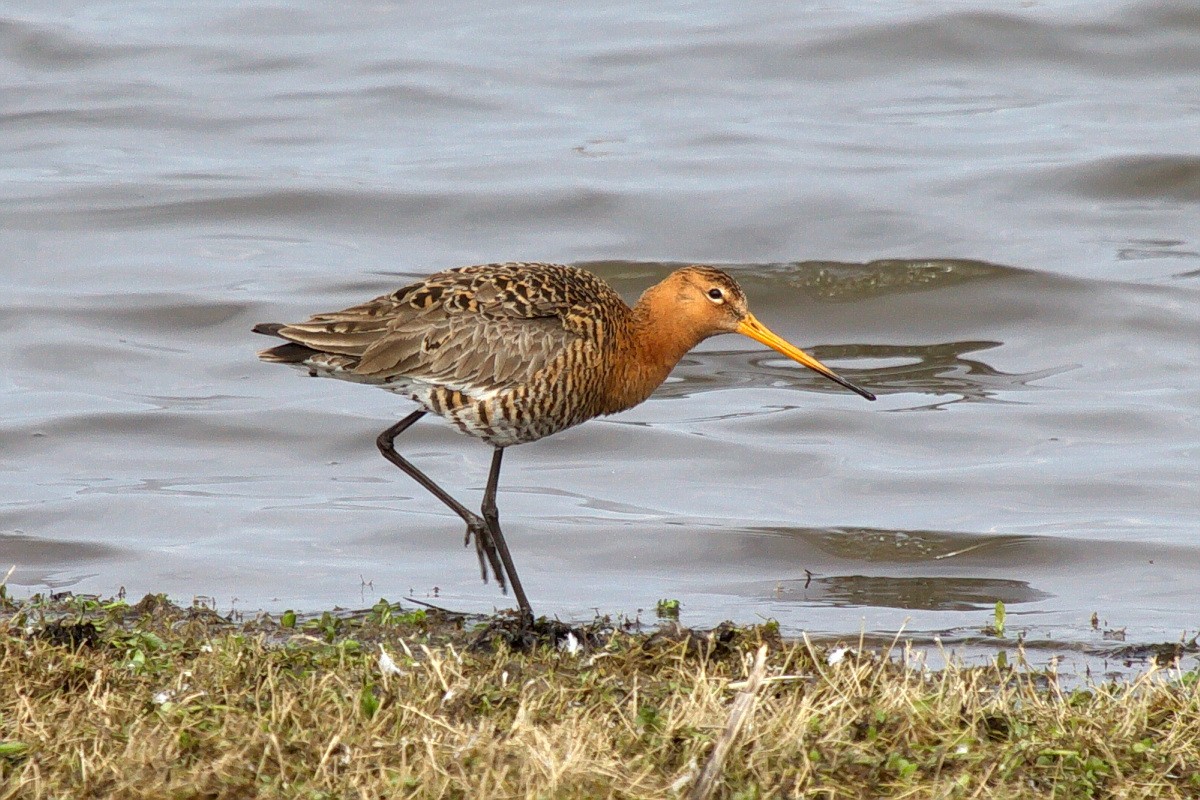Black-tailed Godwit
A species of Godwits, Also known as Blackwit Scientific name : Limosa limosa Genus : Godwits
Black-tailed Godwit, A species of Godwits
Also known as:
Blackwit
Botanical name: Limosa limosa
Genus: Godwits
Content
Description People often ask General Info
 Photo By Frebeck , used under CC-BY-SA-3.0 /Cropped and compressed from original
Photo By Frebeck , used under CC-BY-SA-3.0 /Cropped and compressed from original Description
A social wader, the black-tailed Godwit is a common bird with an almost global range. It is primarily seen in brackish and freshwater but breeds in damp wetlands with plenty of grass. The wader’s long bill is a useful tool. The bird uses it to probe for insects and aquatic plants in deep water.
Size
42 cm
Colors
Black
Gray
Orange
Life Expectancy
16 years
Nest Placement
Ground
Feeding Habits
Black-tailed Godwit's diet consists primarily of invertebrates, with seasonal consumption of aquatic plants, fish eggs, frogspawn, and tadpoles. They exhibit rigorous probing in water and soft ground for foraging, sometimes submerging their heads or picking prey from the surface.
Habitat
The black-tailed Godwit predominantly occupies various wetland habitats. These include river valley fens, edges of large lakes, damp steppes, raised bogs, and moorlands for breeding. A small population also breeds in lowland wet grasslands, coastal grazing marshes, and agricultural fields in Europe. During winter, the black-tailed Godwit prefers estuaries, lagoons, mudflats, and inland wetlands. The limosa race favors freshwater habitats, whereas the islandica and melanuroides races are more inclined towards estuarine environments.
Dite type
Aquatic invertebrate eater
People often ask
General Info
Feeding Habits
Bird food type
Distribution Area
Black-tailed godwits have a discontinuous breeding range stretching from Iceland to the far east of Russia. Their breeding habitat is river valley fens, floods at the edges of large lakes, damp steppes, raised bogs and moorlands. An important proportion of the European population now uses secondary habitats: lowland wet grasslands, coastal grazing marshes, pastures, wet areas near fishponds or sewage works, and saline lagoons. Breeding can also take place in sugar beet, potato and rye fields in the Netherlands and Germany. In spring, black-tailed godwits feed largely in grasslands, moving to muddy estuaries after breeding and for winter. On African wintering grounds, swamps, floods and irrigated paddy fields can attract flocks of birds. In India, inland pools, lakes and marshes are used, and occasionally brackish lakes, tidal creeks and estuaries. Godwits from the Icelandic population winter mainly in the United Kingdom, Ireland, France and the Netherlands, though some fly on to Spain, Portugal and perhaps Morocco. Birds of the limosa subspecies from western Europe fly south to Morocco and then on to Senegal and Guinea-Bissau. Birds from the eastern European populations migrate to Tunisia and Algeria, then on to Mali or Chad. Young birds from the European populations stay on in Africa after their first winter and return to Europe at the age of two years. Asian black-tailed godwits winter in Australia, Taiwan, the Philippines, Indonesia, and Papua New Guinea. Black-tailed godwits are much more likely to be found on inland wetlands than the more coastal bar-tailed godwit. They migrate in flocks to western Europe, Africa, south Asia and Australia. Although this species occurs in Ireland and Great Britain all year-round, they are not the same birds. The breeding birds depart in autumn, but are replaced in winter by the larger Icelandic race. These birds occasionally appear in the Aleutian Islands and, rarely, on the Atlantic coast of North America. There is an estimated global population of between 634,000 and 805,000 birds and estimated range of 7,180,000 square kilometres (2,770,000 sq mi). In 2006 BirdLife International classified this species as Near Threatened due to a decline in numbers of around 25% in the previous 15 years. It is also among the species to which the Agreement on the Conservation of African-Eurasian Migratory Waterbirds (AEWA) applies. 
Species Status
Not globally threatened.
Scientific Classification
Phylum
Chordates Class
Birds Order
Shorebirds Family
Sandpipers Genus
Godwits Species
Black-tailed Godwit